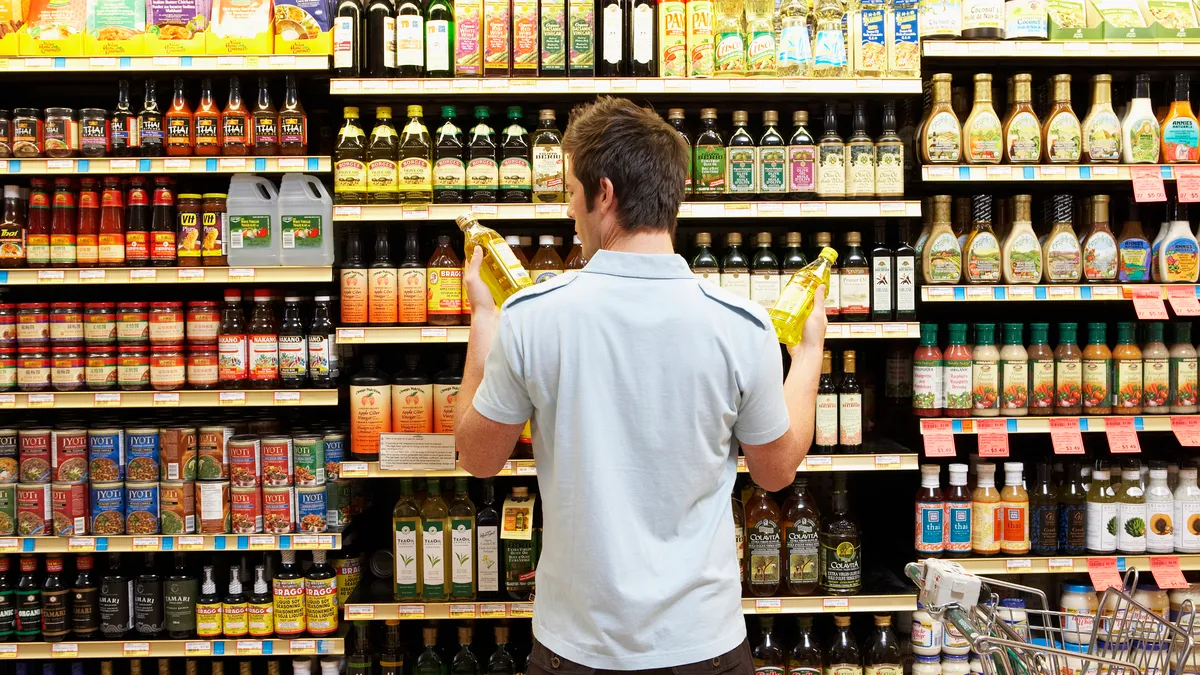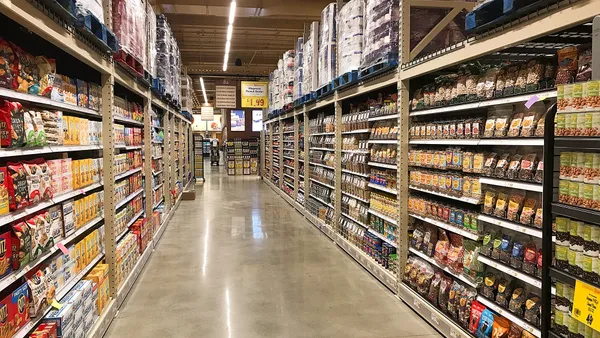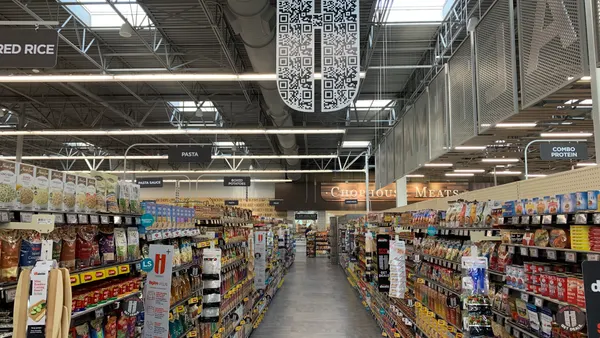Dive Brief:
- Overall visits to grocery stores declined in February compared with the same month in 2019, ending a 10-month streak during which supermarkets saw rising foot traffic by that measure, according to data from Placer.ai.
- Foot traffic during the first three weeks of April was roughly equivalent to levels seen during that stretch of 2019, suggesting the decline may already have stabilized, Placer reported.
- Visits to supermarkets have slowed as rising inflation drives up the cost of gasoline, making it more costly for many shoppers to travel to stores.
Dive Insight:
While the slowdown in foot traffic at grocery stores earlier this year is a potentially ominous sign for food retailers, the fact that visits appear to have stopped going down suggests consumers may be getting used to the rising costs they are seeing on store shelves and gas pumps, according to the Placer report.
Meanwhile, discount grocery chains appear to be especially well positioned as inflation dents people’s buying power, Placer found. Aldi and Lidl both outperformed other grocers in terms of store visits during the first quarter in markets the research firm studied.
Lidl drew more foot traffic than ShopRite and Whole Foods Market in the New York City and Philadelphia markets during every week of the first quarter, according to Placer, which uses cell phone data to measure visits to retailers. Similarly, Aldi saw stronger traffic than chains including H-E-B and Kroger in Houston, and bested stores run by Ahold Delhaize, Albertsons and other grocers in Baltimore.
Discounter Grocery Outlet also seems to be benefiting from current economic conditions, Placer found. The chain, which consists of independently owned stores with varying product selections, attracted stronger foot traffic throughout the first quarter in markets in California and Washington the research firm studied.
Placer notes that there seems to be a correlation between the types of stores shoppers frequent most and the inflation rate in the area where they live.
For example, visits to grocery stores rose while foot traffic slowed at mass retailers in March compared with the same month in 2019 in the Riverside, California, area, where inflation was above the national average. Conversely, in the New York City region, where inflation was slower than the national average, grocery store visits dropped and traffic at mass merchants rose, Placer reported.
High gas prices can cause people to make fewer visits to grocery stores and buy more per trip. Placer cited Albertsons' claims that its customers are consolidating trips to save on gas and also making bigger baskets.












